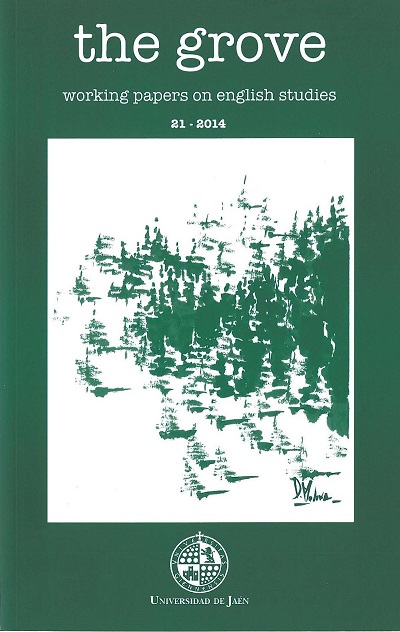Can Literary Works Help to Memorialize Natural Disasters? Zora Neale Hurston's Their Eyes Were Watching God
Abstract
Although relatively little critical attention has been paid to the closing chapters of Zora Neale Hurston’s Their Eyes Were Watching God, the representation of the 1928 cyclone that struck the Everglades in Florida can be seen to have left a profound—and traumatic—impact on both the relations among different human groups and the author’s narrative technique. Not only is the title of the book extracted from this section of the book, but faced with the “monstropolous beast” (239) of a Caribbean hurricane, the main characters of the novel realize that interracial attitudes and social structures begin to change shape and lose stability. This article shows that questions of class, race and gender rise in both structural and figurative importance in the closing chapters of the book, and that Hurston was genuinely committed to memorialize the losses and mental wounds of those who have generally been forgotten in official records.Downloads
References
Alexander, Jeffrey C. “Introduction: Toward a Theory of Cultural Trauma”. Cultural Trauma and Collective Identity. Eds. J. Alexander et al. Berkeley, L.A., and London: University of California Press, 2004. 1-30.
Duplessis, Rachel. “Power, Judgment, and Narrative in a Work of Zora Neale Hurston: Feminist Cultural Studies.” New Essays on Their Eyes Were Watching God. Ed. Michael Awkward. Cambridge and New York: Cambridge UP, 1990. 95-123.
Erikson, Kai T. Everything in its Path: Destruction of Buffalo Creek. New York: Simon & Schuster, 1976.
Hurston, Zora Neale. Their Eyes Were Watching God. 50th Anniversary Edition with a Foreword by Sherley A. Williams. Urbana and Chicago: University of Illinois Press, 1978 (originally published 1937).
Johnson, Barbara. “Thresholds of Difference: Structures of Address in Zora Neale Hurston.” Zora Neale Hurston: Critical Perspectives Past and Present. Eds. Henry L. Gates and K.A. Appiah. New York: Amistad Press, 1993. 130-40.
Klinkenberg, Jeff. “Unmarked but not Unmourned: 1928 Hurricane’s victims get memorial 80 years later.” St. Petersburg Times (14 September 2008). Web. 22 November 2011. <http://www.tampabay.com/features/humaninterest/article808161.ece>.
Mykle, Robert. Killer ’Cane, the Deadly Hurricane of 1928. New York: Taylor Trade Publishing, 2006.
Neal, Arthur. National Trauma and Collective Memory: Extraordinary Events in the American Experience. Armonk, New York: M.E. Sharp, 1998.
Schwartz, Stuart B. “Differential Disasters: The 1928 Hurricane and the Shaping of the Circum-Caribbean Region.” ReVista: Harvard Review of Latin America 6.2 (Winter 2007): 3-7.
Will, Lawrence. Okeechobee Hurricane and the Hoover Dike. St. Petersburg, FL: Great Outdoors Publishing, 1961.
Wolff, Maria T. “Listening and Living: Reading and Experience in Their Eyes Were Watching God.” Zora Neale Hurston: Critical Perspectives Past and Present. Eds. Henry L. Gates and K.A. Appiah. New York: Amistad Press, 1993. 218-29.
Published
Issue
Section
License
Authors who publish with this journal agree to retain copyright and grant the journal right of first publication with the work simultaneously licensed under a Creative Commons Attribution License that allows others to share the work with an acknowledgement of the work's authorship and initial publication in this journal. Also, authors will retain the rights on their work, even if they will be granting The Grove. Working Papers on English Studies a non-exclusive right of use to reproduce, edit, distribute, publicly communicate and show their work. Therefore, authors are free to engage in additional, independent contracts for non-exclusive distribution of the works published in this journal (such as uploading them to an institutional repository or publishing them in a book), as long as the fact that the manuscripts were first published in this journal is acknowledged.
















